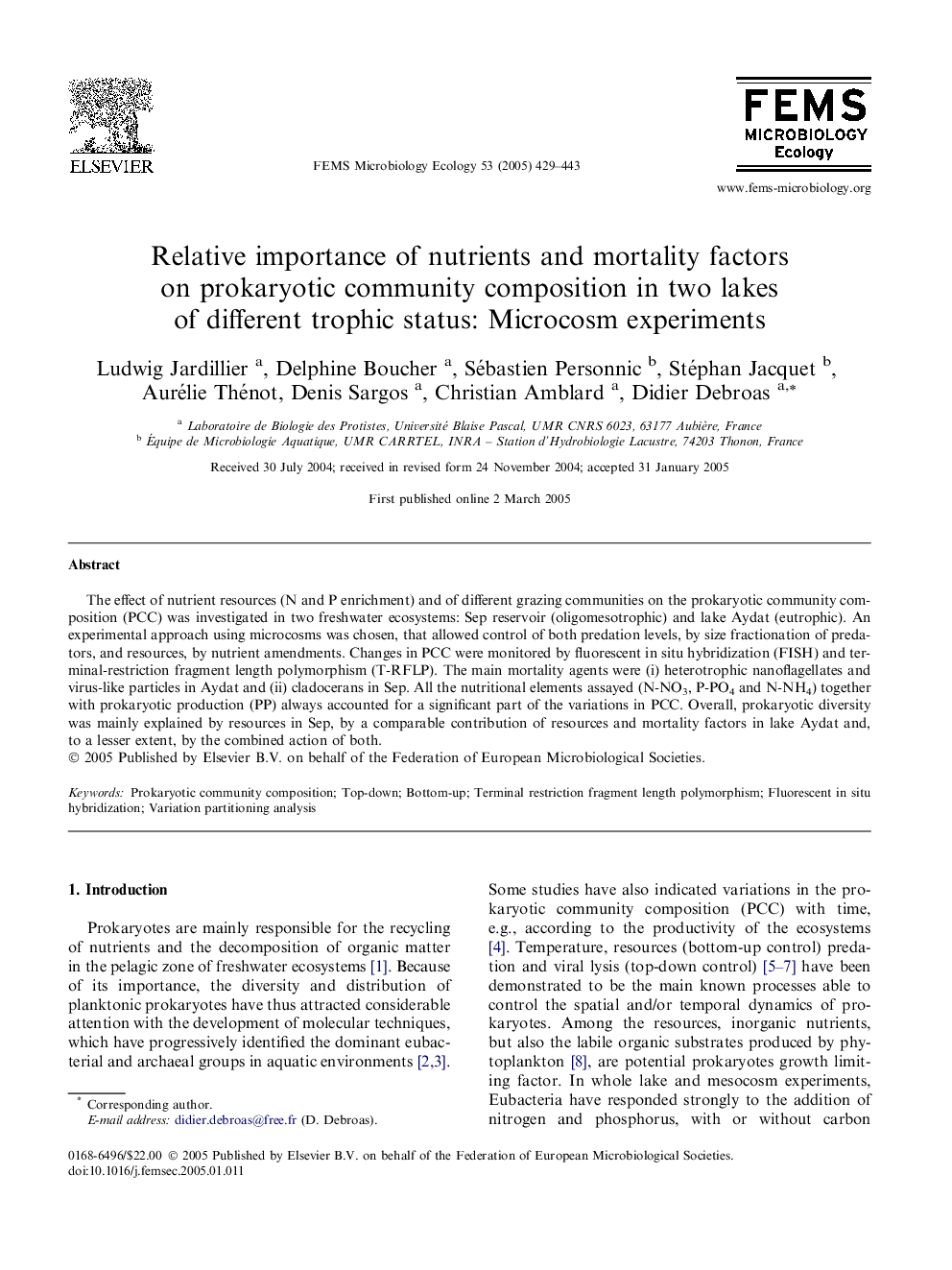| Article ID | Journal | Published Year | Pages | File Type |
|---|---|---|---|---|
| 9437670 | FEMS Microbiology Ecology | 2005 | 15 Pages |
Abstract
The effect of nutrient resources (N and P enrichment) and of different grazing communities on the prokaryotic community composition (PCC) was investigated in two freshwater ecosystems: Sep reservoir (oligomesotrophic) and lake Aydat (eutrophic). An experimental approach using microcosms was chosen, that allowed control of both predation levels, by size fractionation of predators, and resources, by nutrient amendments. Changes in PCC were monitored by fluorescent in situ hybridization (FISH) and terminal-restriction fragment length polymorphism (T-RFLP). The main mortality agents were (i) heterotrophic nanoflagellates and virus-like particles in Aydat and (ii) cladocerans in Sep. All the nutritional elements assayed (N-NO3, P-PO4 and N-NH4) together with prokaryotic production (PP) always accounted for a significant part of the variations in PCC. Overall, prokaryotic diversity was mainly explained by resources in Sep, by a comparable contribution of resources and mortality factors in lake Aydat and, to a lesser extent, by the combined action of both.
Keywords
Related Topics
Life Sciences
Environmental Science
Ecology
Authors
Ludwig Jardillier, Delphine Boucher, Sébastien Personnic, Stéphan Jacquet, Aurélie Thénot, Denis Sargos, Christian Amblard, Didier Debroas,
